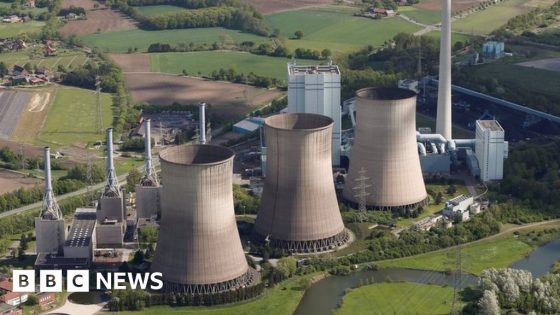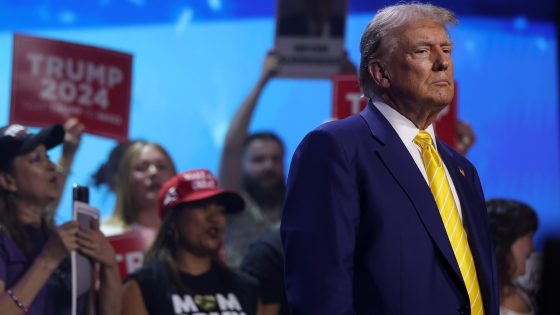When word of Honda’s soon-to-be-announced electric vehicle investment leaked to Bloomberg News on Sunday, Ontario Premier Doug Ford saw an opening to boast about his government’s success in getting into the automotive battery business.
“We’ve overtaken China and knocked them off the pedestal for the first time ever,” he told the First Nations Major Project Coalition conference on Monday morning, referring to Canada’s top spot in a recent global supply chain ranking. “That’s absolutely huge.”
Expect more superlatives when Honda Canada makes its official announcement in Alliston, Ont., on Thursday, as government and industry leaders celebrate the fact that the company behind some of Canada’s most popular models is settling in for the long haul in Canada’s EV sector.
“This may be Honda’s biggest bet anywhere on the planet,” Flavio Volpe, the president of the Automotive Manufacturers Association of Canada, told CBC News. He called it a “double down” on Canada and “an announcement that I think will be heard around the world.”
Honda doesn’t make speculative bets, he said. “They’ve been in Canada for almost 40 years. They’ve never retreated, they’ve never gone back. This is, for Canadian suppliers, an extremely bankable customer to get.”
Enjoying the hype this announcement is generating means ignoring, for the time being, the fact that most of Northern Ontario’s critical minerals are years (if not decades) away from powering all the new EVs Canadians will be federally mandated to purchase after 2035 to meet federal carbon emissions targets.
It means overlooking the fact that Ford’s government remains well short of the Indigenous partnerships and permissions it will need to fulfil its Ring of Fire mining aspirations. It means dismissing the failure to date of early consumer incentives and spiking spring gas prices to set off a rush of EV sales, and the fact that many of the new EVs on Ontario’s roads were imported from a Tesla gigafactory in Shanghai.
“Here in Ontario, we’ve become a world leader in the electric vehicle revolution,” Ford bragged.
How big is ‘big’?
Ford said the deal coming this week will be “double the size of Volkswagen.”
The $7 billion VW battery plant now under construction in St. Thomas, Ont., covers roughly 150 hectares — over 200 football fields. It’s “like a city in itself,” Ford said.
It was not clear from Ford’s comments if he meant Honda’s new operation will cover twice the acreage of the Volkswagen plant, or if its investment is double the size of the Volkswagen deal. Either way, it’s historic.

In January, the Japanese news outlet Nikkei was the first to report Honda was considering an investment of 2 trillion yen (about $18 billion Cdn) to start up an EV supply chain in Canada.
Ford’s economic development minister, Vic Fedeli, appeared to confirm Thursday’s figures could be on that scale when speaking to reporters at Queen’s Park on Monday.
Ontario’s EV investments “went from zero to $28 billion in three years,” he said, before hedging slightly.
“If the premier, if his comments are correct,” he added, “then next week we’ll be announcing $43 billion in EV, or a number in and around there.”
So is Honda about to invest $15 billion in Ontario?
Not so fast. In a subsequent report published Tuesday, Nikkei said Honda was preparing a one-trillion yen announcement (approximately $8.8 billion.)
As the premier told his Monday audience, “stay tuned.”
How much will taxpayers contribute?
The timing of Honda’s announcement was a business decision — but it’s a happy coincidence for Prime Minister Justin Trudeau that it fell in the midst of his ministers’ post-budget marketing tour.
Only a few months after Trudeau signalled that the federal government was running out of money for automotive subsidies — prompting fears that Toyota Canada would hit the brakes on further Ontario expansion — a change in government tactics apparently paid off.
Canada’s share of North American manufacturing could have been in jeopardy if the federal and provincial governments hadn’t stepped up with both investment tax credits and production subsidies to compete with the Inflation Reduction Act introduced by U.S. President Joe Biden.
Those billions were enough to land Ontario its first two battery plants: the VW plant in St. Thomas and the Stellantis facility in Windsor. But the Trudeau government warned at the time that their production subsidies aren’t sustainable.
The sweeteners offered to land this Honda deal are more predictable because they’re based on the value of Honda’s investment, not future production levels.
In the 2023 federal budget, the Liberals introduced a clean manufacturing investment tax credit that rebates 30 per cent of the cost of new machinery and equipment. Its implementation legislation, C-59, has yet to pass; the Liberals hope it receives royal assent by June.
Last week, the 2024 federal budget introduced a ten per cent electric vehicle supply chain investment tax credit to offset the cost of buildings. Companies receiving the tax credit must invest in three parts of the EV supply chain: EV assembly, battery production and production of cathode active material for those batteries.
Finance Minister Chrystia Freeland’s department took the lead in federal talks with Honda; her budget forecasts a $80 million expenditure on this tax credit over the next five years. The federal government has hinted it anticipates about $800 million in investment on eligible buildings between now and 2029.
Honda appears set to be the first — and possibly the only — carmaker to make the vertical investments required to access this credit, with an expansion of its facilities in Alliston as well as other yet-to-be announced expansions in Ontario.
CBC News has confirmed that Honda is gearing up to announce a multibillion-dollar deal to build electric vehicles in Canada. Though not all the details are known, Ontario’s premier hinted it’s the ‘largest deal in Canadian history.’
CBC News has not confirmed that a site earmarked for EV battery production in St. Clair township near Sarnia, Ont., is part of Honda’s negotiations. Fedeli said Monday that land in Wilmot township near Waterloo, Ont., was not part of Honda’s plans.
Quebec’s economy minister, Pierre Fitzgibbon, told reporters at the National Assembly Tuesday that he was in talks to land a piece of Honda’s business at the industrial park in Bécancour, Que., where other automotive giants are setting up cathode materials manufacturing.
Fitzgibbon admitted he was outbid by Ontario.
To help attract EV investment, Ontario’s 2023 provincial budget included a 10 per cent refundable corporate income tax credit for eligible investments in buildings, machinery and equipment, worth up to $2 million a year for individual corporations.
The Toronto Star has reported that when the Stellantis deal was in jeopardy, the federal government convinced the Ford government to pile on more provincial subsidies in return for federal cooperation on the environmental assessments required to build Highway 413.
It’s not known whether a similar last-minute squeeze happened in the Honda talks. Ontario Finance Minister Peter Bethlenfalvy’s statement in reaction to the April 16 federal budget nodded to this Highway 413 quid pro quo and revived Ontario’s demand for the federal government to “eliminate duplicative reviews and processes that are slowing down” Ring of Fire projects.
Are more Japanese investments coming?
Volpe said the new rules hammered out during the NAFTA renegotiation talks anticipated the transition to electrified powertrain products and batteries by making sure carmakers couldn’t source components offshore (China, mainly) without risking tariffs.
During a 2023 visit to Canada, Japanese Prime Minister Fumio Kishida called China a “central challenge.”
Geopolitically, Japan is far more comfortable working with Canada to source the critical minerals its automotive engineers need.
Last September, Japan’s economy, trade and investment minister Yasutoshi Nishimura visited Ottawa with a delegation of Japanese businesspeople from its battery supply chain association (BASC) and corporations like Panasonic Energy, Asahi-Kasei, Mitsubishi, Mitsui and Sumitomo. They signed memoranda of cooperation with Canadian companies about sharing technology and business intelligence.
This week’s Honda announcement will be Canada’s biggest EV investment deal so far. But it wasn’t the first and it’s not expected to be the last.
Now that Honda’s seen enough to place its bet and become Ontario’s third EV battery maker, attention will turn to whether Toyota might reconsider becoming the fourth — and whether Canada’s clean power grids can accommodate more ambition.
“Every single car company is spending all of their future R&D dollars on electrified product or fuel cell project product, anything that’s zero emission,” Volpe said, dismissing the naysayers who’ve lost faith due to slow consumer sales.
“We all know where we’re going.”
Source Agencies





